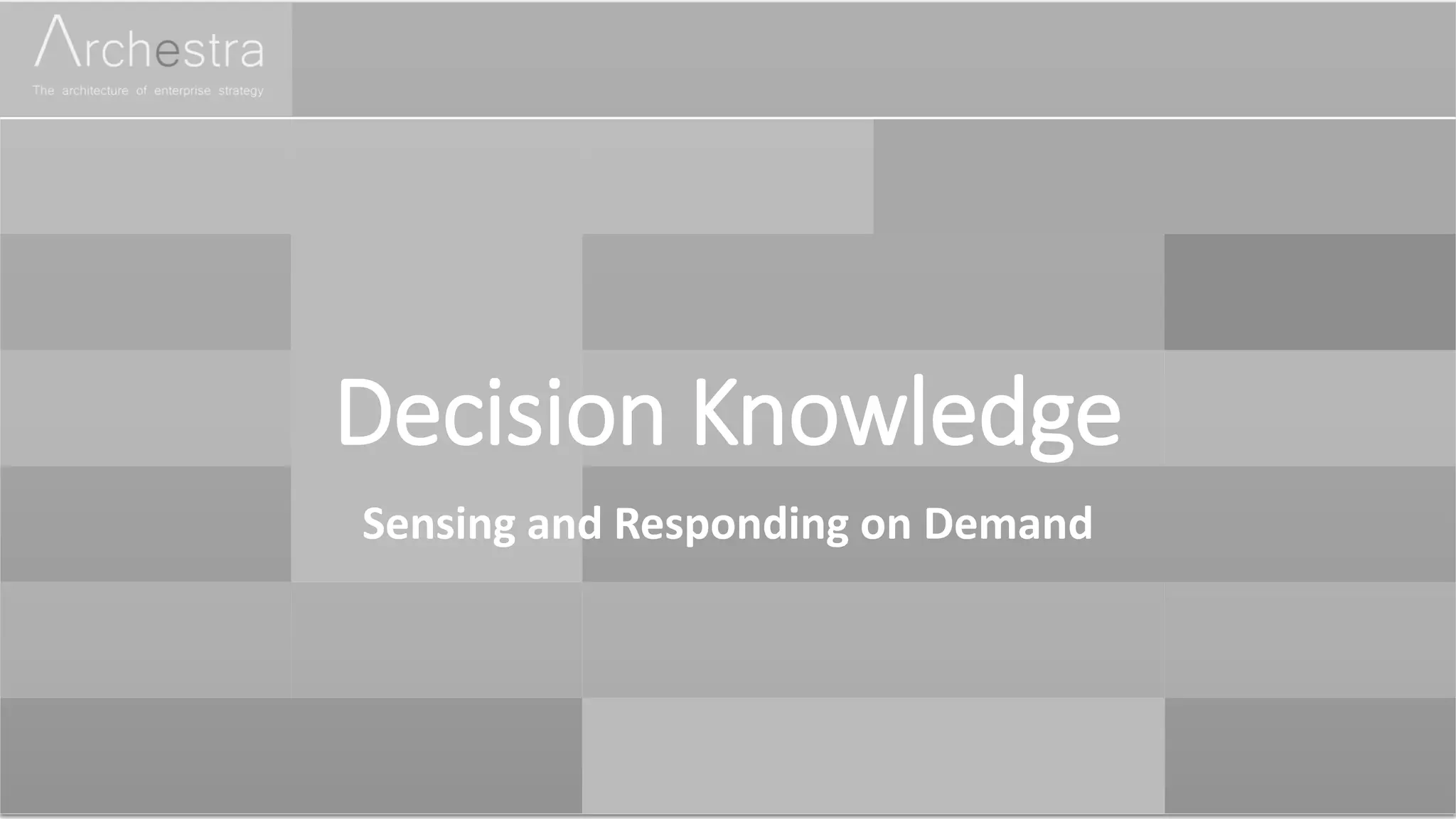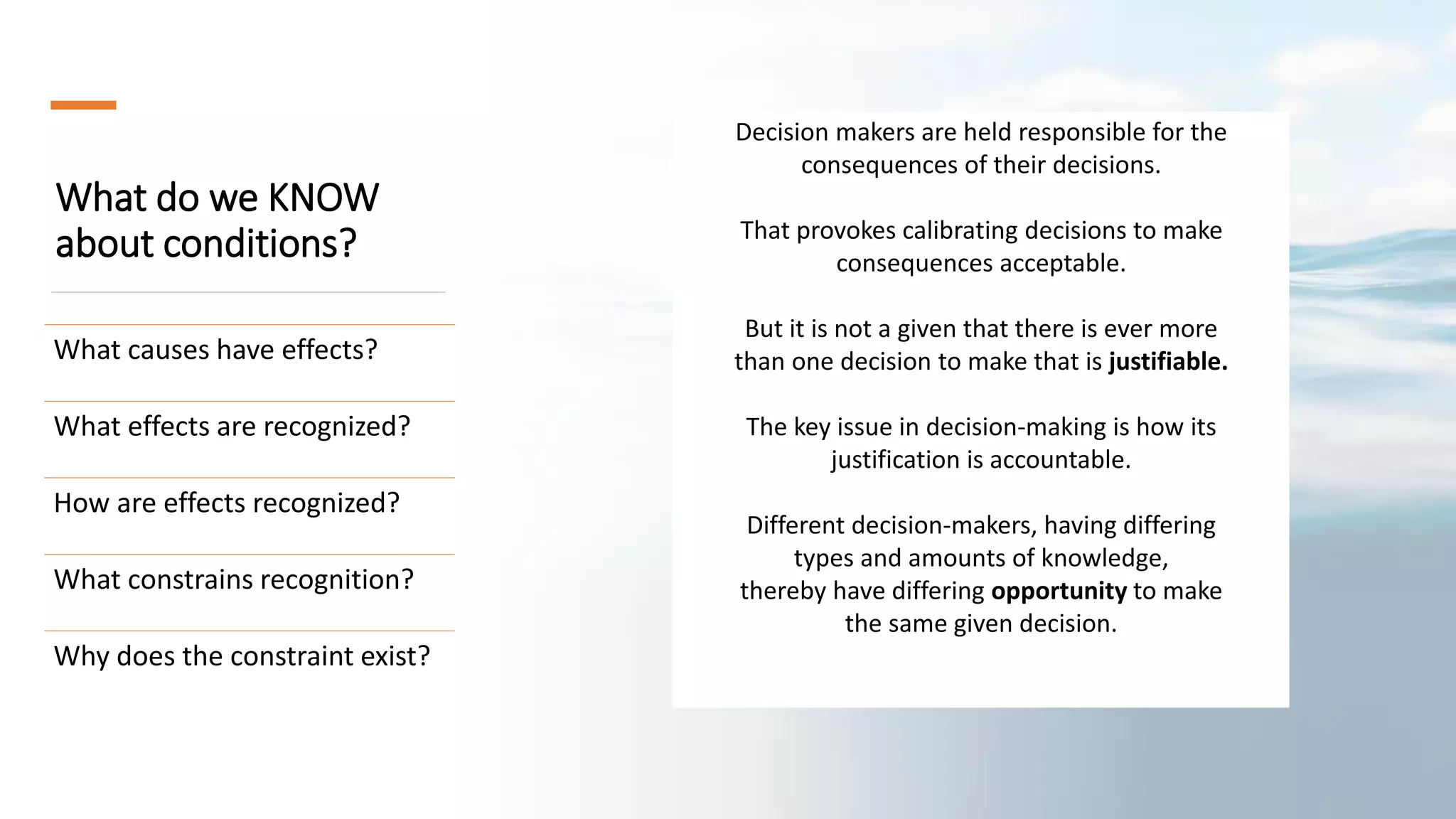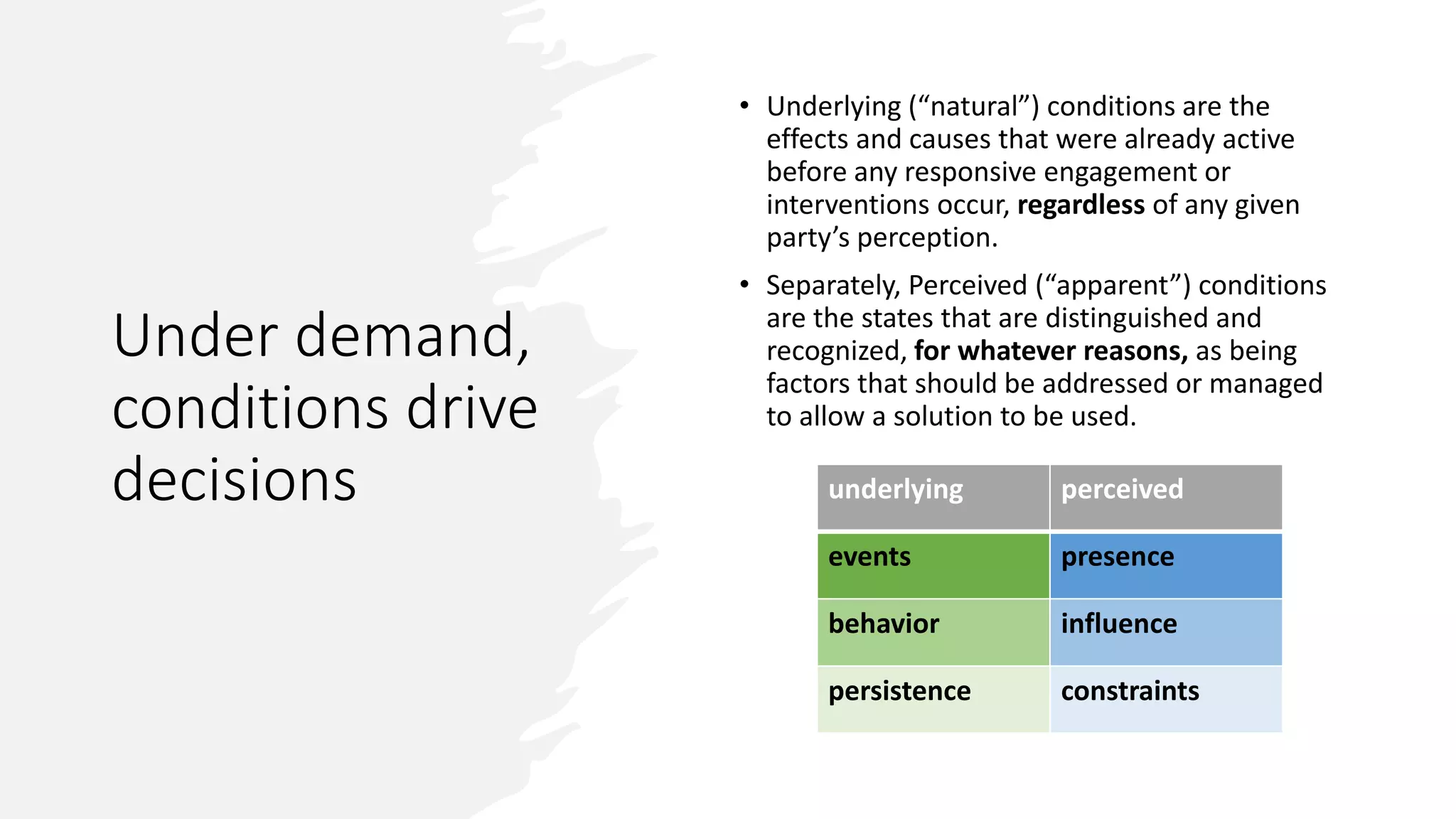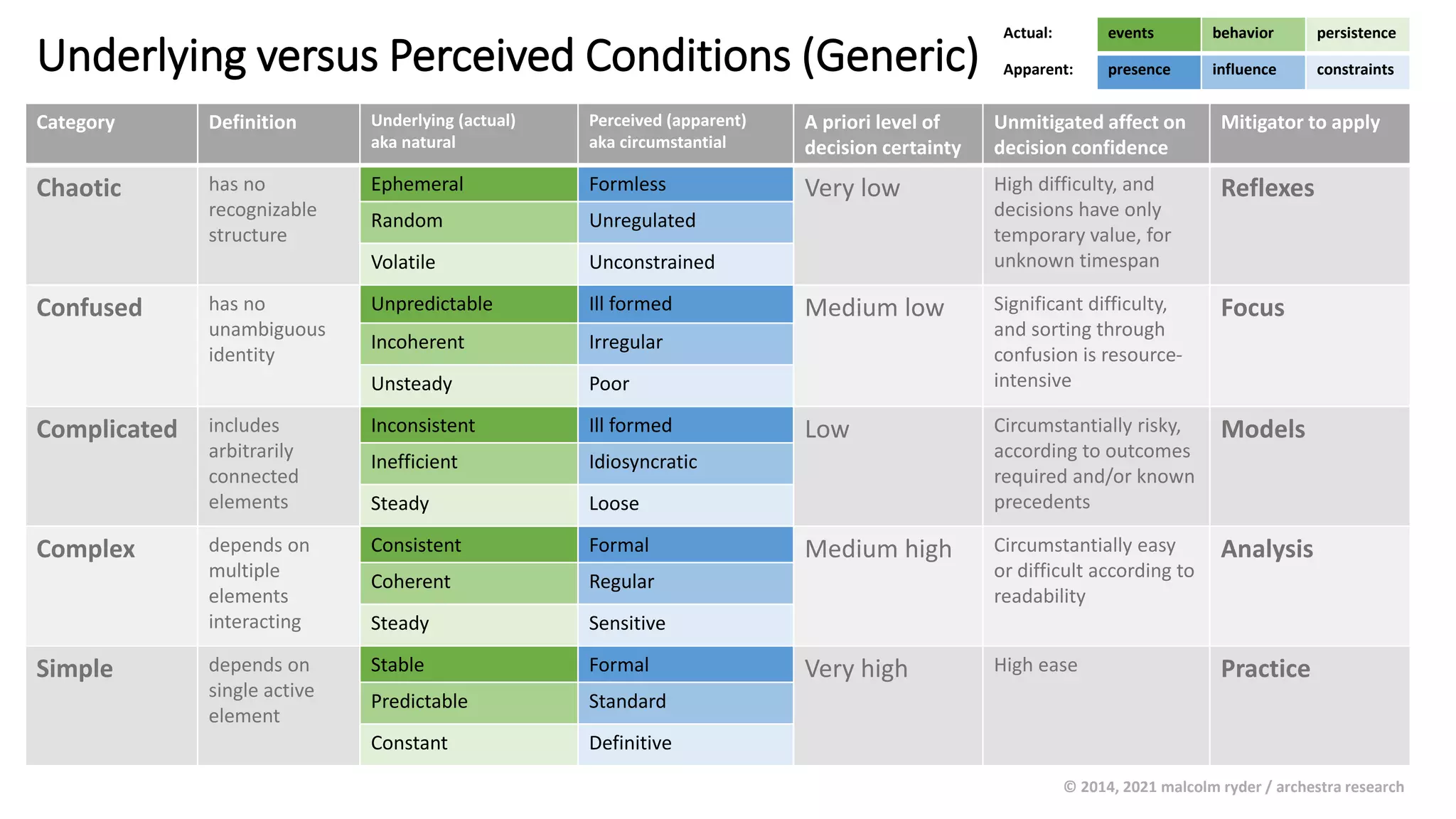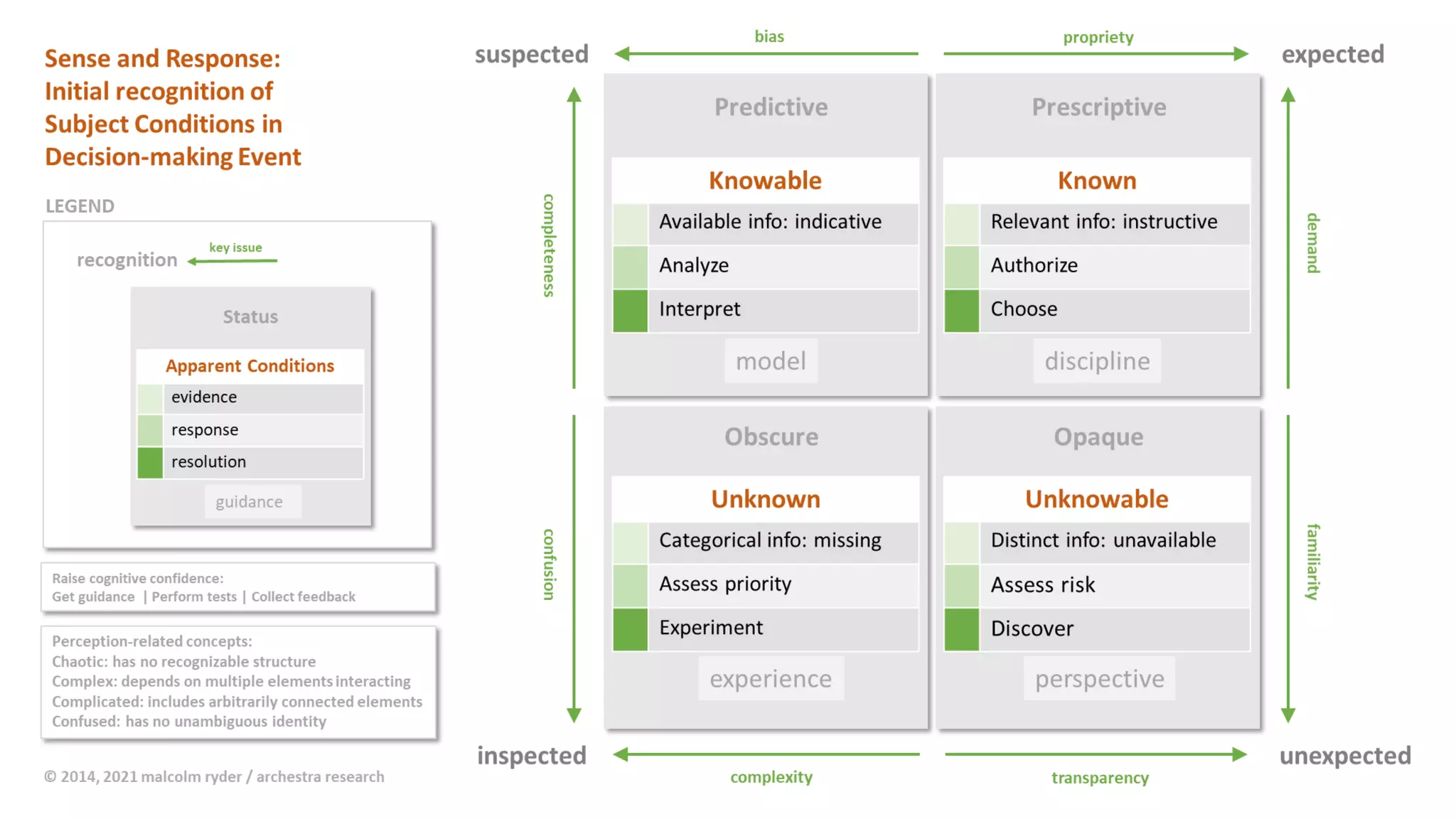1. The document discusses decision making and the factors that influence it. It distinguishes between underlying conditions, which are the actual pre-existing causes and effects, and perceived conditions, which are the states recognized as factors that need to be addressed in making a solution or decision.
2. Decision makers are held responsible for the consequences of their decisions, which leads them to calibrate decisions to make the consequences acceptable. However, there is not always more than one justifiable decision to make.
3. The level of certainty in a decision depends on whether the underlying conditions prevent effective perception from guiding solutions. Different decision makers have different knowledge and opportunities to make the same decision.
